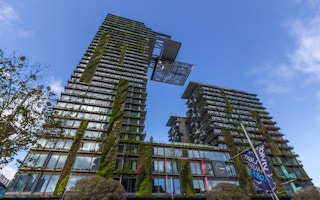A new report by Australia’s Future Business Council has provided some optimism for an economy plagued by the slowdown of its coal and iron industries in the past year by identifying a trillion-dollar opportunity offered by the growing global demand for sustainable goods and services.
Titled The Next Boom: A surprise new hope for Australia’s Economy and launched in Melbourne on Tuesday, the report cited solar panels, hybrid vehicles, green buildings and climate bonds as some examples of sustainable solutions that are soaring in popularity worldwide.
Trillions of dollars will be invested across the planet to fulfil the for these products, and according to Tom Quinn, executive director, FBC, “Australia has a once in a generation chance to become one of the world’s leading producers of clean goods and services.”
In the past decade, many green commodities have seen huge spikes in adoption, the report showed.
In Australia, wind farm installations, for example, have increased by more than 500 per cent between 2000 and 2014, while the number of commercial buildings with the national green certification, known as NABERS, almost doubled in the same period.
The sale of hybrid vehicles in the country shot up by 165 per cent between 2002 and 2013, while electric car sales saw a similar increase in four years, between 2010 and 2014.
The issuance of climate bonds – which fund sustainable development projects – also increased 200 per cent globally between 2007 and 2014.
Similar trends are evident across all sectors including agriculture, buildings, energy and manufacturing, and are influenced by a combination of factors, the report found.
The three main driving forces behind this “next boom” are: A stronger consumer preference for better and cleaner products; government policies which are cracking down on polluting companies; and the growing scarcity of resources such as water, food, and other raw materials.
“Environmental pressures have spurred enormous improvements in agricultural water efficiency, recycling rates, and steel production,” said Quinn in a statement.
Many companies have already begun to capitalise on this trend, the report said. Examples include peer-to-peer accommodation site Airbnb; Australian sustainable tourism firm Intrepid Travel, which promotes ethical and low-impact holidays; and Fairtrade, a global certification for environmentally and socially responsible products.
With its highly educated workforce, access to abundant renewable energy, and proximity to Asia’s burgeoning markets, the Australian economy can and should benefit from this growing demand for sustainable goods, said Quinn.
But Australia also faces stiff competition from other countries which are ramping up efforts to “sieze the lead” in developing sustainable technologies to achieve a green economy, he warned.
For example, Germany’s infrastructure bank has a five-year, 100 billion euro green investment plan, and California has set aggressive sustainability targets, such as a plan for the American state’s utilities to get a third of all power from renewable sources by 2020.
Abu Dhabi in the United Arab Emirates has also invested US$22 billion in a sustainable district called Masdar City, which will be the new headquarters of the International Renewable Energy Agency (IRENA).
The report recommended three key steps that Australia can take to stay ahead of the game.
First, it should build a stronger international reputation for the sustainability of Australian exports, so that ‘Made in Australia’ is synonymous with green products worldwide.
This can be done by introducing certification schemes to assure consumers of the green credentials of goods and help companies to apply for these programmes.
Second, the government should remove market barriers to new and sustainable business models, such as sharing economy ventures or renewable energy initiatives which change how consumers exchange energy with the grid.
Making it easier for these companies to get approval for their businesses, as well as phasing out support for unsustainable ventures like coal mines will create a sustainable business ecosystem.
Third, the government should introduce market mechanisms to spur innovation and encourage positive business practices, as well as discourage waste and pollution.
Strategies suggested in the report include placing a cost on greenhouse gas emissions to keep energy use low, and pricing recyclable waste materials so that businesses reuse materials and invest in better waste collection and sorting facilities.
“Smart reforms are needed to give local industry a competitive advantage and support businesses competing for a share of the next boom”, said Quinn.
“The window to capitalise on this boom is closing fast. Australia must move quickly to secure a lead,” he added.

















